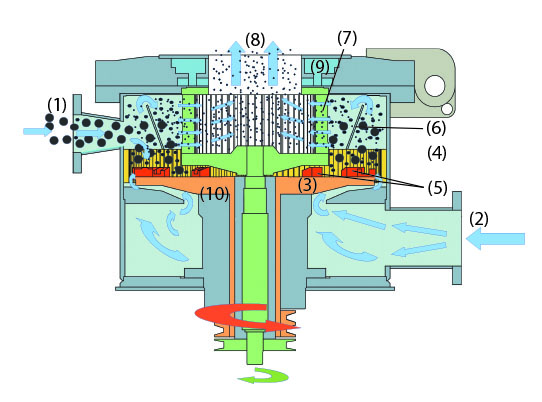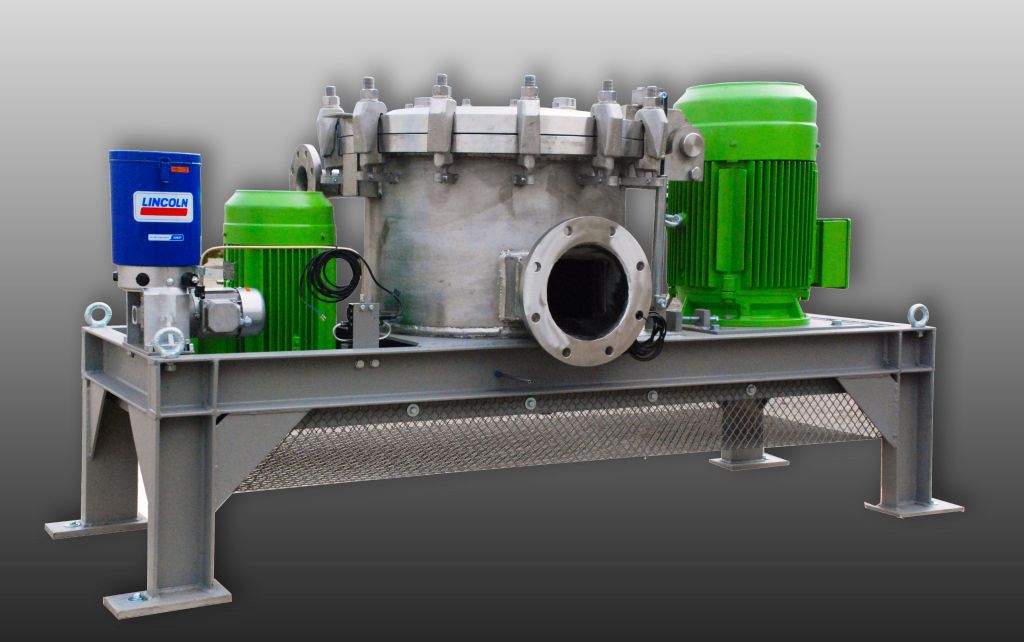Classifier Mill CCM
Often the one-stage grinding is not sufficient for the production of very fine particles. For this reason, impact mills are equipped with a classifying rotor. The classifier mill CCM thus combines an impact mill with a dynamic fine classifier. It enables with little effort the production of particles with very fine sizes, in a self-contained system. The combination of impact mill and fine classifier in a single housing offers the following advantages:
• cost-effective compared to installations with separate mill and fine classifier
• compact design
• simple to operate
• easy to clean
Applications:
The classifier mill CCM is a flexible machine for the production of the finest powders with a defined particle distribution limit of up to 200 µm. It is used for the dry fine milling of materials with a Mohs hardness of up to 3.5. De-agglomeration of products is possible with materials with a Mohs hardness of 5. During classification, particle sizes between 10 µm and 200 µm can be achieved. Due to the high volume flow of visible air, temperature-sensitive products can be processed.
Advantages for the operator:
• high process reliability thanks to a robust, time-proven design
• sharp, easily adjustable separation profile
• low temperature increase of product during milling
• high, continuous throughput
Versions:
• Housing - pressure resistant, up to 10 bar overpressure
• different materials depending on application: (stainless steel, special steel, ceramics), surfaces treated or polished, wear protection
• Classifying rotor - different geometries (viewing vane - inclined, radially ordered)
• Grinding disc - different sizes and materials, different number of grinding elements
• various grinding elements (grinding pins, smooth or notched grinding blocks)
• various grinding profiles
Function
Ggrinding material passes pneumatically through the tangential inlet (1) into the classifier mill. The classifying air enters the mill through the radial inlet (2) in the lower area of the mill. The air flows from below to the grinding disk into the grinding zone. As a result of the turbulent flow, the material is evenly distributed over the grinding disk (3). The grinding material is thrown against the stationary grinding profile (5) by impact on the rotating grinding elements (4). It is successively crushed. After impact on the grinding path, the material is fed by air to the classifying rotor (7) via the guide device (6) located above it. Which grain sizes is pass through the separator rotor can be adjusted by the parameters air flow and the classifying rotor RPM. The rejected coarse particles are returned to the grinding disk by air flow. The fine particles passing through the classifying rotor are transported pneumatically through the central outlet (8) located in the cover of the mill and subsequently separated by cyclone separators or baf filter.

Special Design Features
• suitable for the dry-milling, because of low temperature increase during operation
• air purging of gape between grinding disc and bearing body
• air purging of gape between classifying rotor and mill housing
• optimized guide device for increased recirculation of the product to the grinding zone
• product-specific interchangeable guide devices to increase productivity
• sensors for monitoring bearing's temperature and vibration
• automatic permanent lubrication of bearings
















